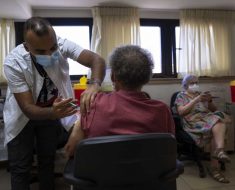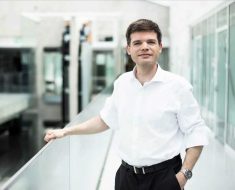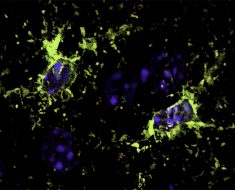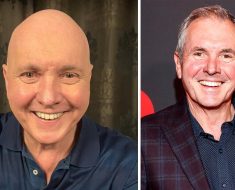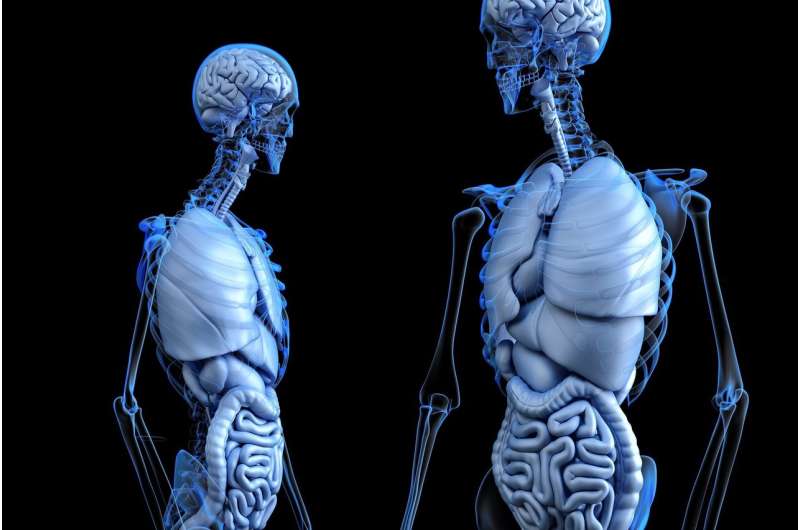
Researchers at the Stanford Institute for Stem Cell Biology and Regenerative Medicine have discovered how changes in aging skeletal stem cells may be an underlying cause of poor fracture healing, osteoporosis and various blood disorders as well as generalized inflammation and aging (sometimes called “inflamm-aging”) of cells and systems throughout the body. However, the researchers are also discovering how they might reinvigorate aging skeletal stem cell so that they start acting younger again, potentially reversing these changes.
“Skeletal stem cells give rise to bone, cartilage, and special cells that provide a niche or nursery for blood and immune stem cells to develop,” said Charles Chan, PhD, a member of the institute and an assistant professor in the Department of Surgery, Plastic and Reconstructive Surgery, and Immunology. “So if aged skeletal stem cells are not performing well, they can contribute to a wide variety of the disorders that we find in older people.”
The Research was published in the journal Nature. Chan and professor Michael Longaker, MD, are senior authors on the paper. Longaker is the Dean P. and Louise Mitchell Professor in the School of Medicine and a member of the Institute for Stem Cell Biology and Regenerative Medicine. Postdoctoral fellow Thomas Ambrosi, PhD is a co- first author along with former medical student Owen Marecic, MD and former postdoctoral fellow Adrian McArdle, MD, PhD.
The researchers were first drawn to the question of how aging skeletal stem cell might contribute to problems healing bone fractures in the aged. Difficulty in healing bone is a leading cause of morbidity and mortality in aging adults. Building on their previous work in which they first discovered and characterized the skeletal stem cell, Chan and Longaker looked at how the behavior of the skeletal stem cells change as they age.
The researchers found that skeletal stem cells were much less active in older mice compared to younger mice. “When bone heals, it develops a callus at the fracture which is usually full of skeletal stem cells,” said Chan. “But in aged mice there are far fewer skeletal stem cells at the site of healing.” Aged skeletal stem cells were also less able to form colonies or bone in the laboratory dish than young skeletal stem cells, they found.
Normally, bones are constantly in flux, with old bone tissue being resorbed and new bone being added to replace it and repair tiny fractures that appear over time. In young, healthy bones, this process is balanced. But in older bones, the researchers discovered that the genes expressed by aged skeletal stem cells were associated with reduced bone formation and greater bone resorption. This imbalance between bone formation and bone resorption ultimately leads to osteoporosis.
Investigating further, the group discovered that part of problem in fracture healing might be found in the connection between skeletal stem cells and the hematopoietic stem cells, or HSCs, that give rise to blood and immune cells. Skeletal stem cells produce not only bone and cartilage, but also special cells that create a nursery or “niche” for developing blood and immune stem cells in the bone marrow. They showed that aged skeletal stem cells produce a niche that alters the development of blood cells. “Exposing HSCs to aged skeletal stem cells skews their development so that they produce more of the cells in the myeloid lineage, which includes a cell type that resorbs bone,” Ambrosi said. The myeloid cells over-produced under the influence of pro-inflammatory aged skeletal stem cells also produce more inflammatory factors, which interferes even more with bone healing.
“This echoes what we see in the clinic, where we put a pin in a broken bone and it just doesn’t heal,” Chan said. “We think that the aged skeletal stem cells are not only making less bone, but they are influencing the development of blood stem cells in a way that that they produce more cells that resorb bone, and produce inflammatory signals that lead to the growth of fibrous tissue rather than bone.”
By altering the normal development of blood and immune stem cells, aged bone cells may accelerate aging and disease in many other parts of the body as well. Inflammation is recognized as an important driver of aging in diverse tissues, and strong linkage between the two has led to the creation of the term “inflamm-aging.” If aged skeletal stem cells are driving the creation of more inflammatory cells, they may ultimately be responsible for much of the increase in inflammation and the aging of tissues throughout the body.
Alterations in the normal development of blood stem cells has also been associated with the development of various disorders, such as atherosclerosis, so aging skeletal stem cells may play a role in the development of many other diseases. “We really don’t know where the influence of aged skeletal stem cells ends,” Chan saidsaid. “They could end up being a primary driver of aging and disease generally.”
The researchers did find reason for hope, however. By doing single-cell genetic analysis of aged skeletal stem cells, they were able to see what genes were expressed less, and what genes were expressed more, as the stem cells aged. As mentioned previously, they saw an increase in many inflammatory factors, but they were drawn to an increase in one particular factor called Colony-stimulating factor 1 (Csf1). This molecule is necessary for bone healing, but it must be present in just the right amount—not too much and not too little. The age-related increase in the amount of Csf1 present seemed to be interfering with the healing process. The scientists also saw decreases in the expression of other genes, and in particular a decrease in the creation of a powerful skeletal stem cell stimulating signaling molecule called bone morphogenetic protein 2 (BMP2).
The group then treated the surface of a bone fracture in an aged mouse with a gel that contained BMP and an antibody that reduced the level of Csf1 to try to reset the behavior of the aged stem cells. The fracture healed much better, although they found that the levels of Csf1 had to be just right.
“We may be able to make aged fracture healing more like youthful fracture healing,” said Longaker. “It’s very exciting. “As our population is aging, the medical burden of aged fractures is also increasing, Longaker said. “If we can locally treat an aged fracture and rejuvenate the repair to be more robust, like it was when the patient was younger, this would have enormous benefits.” For example, Longaker said, the patient could be walking and beginning their recovery more rapidly, thus avoiding complications such as a pneumonia or a blood clot in the leg.
Source: Read Full Article

